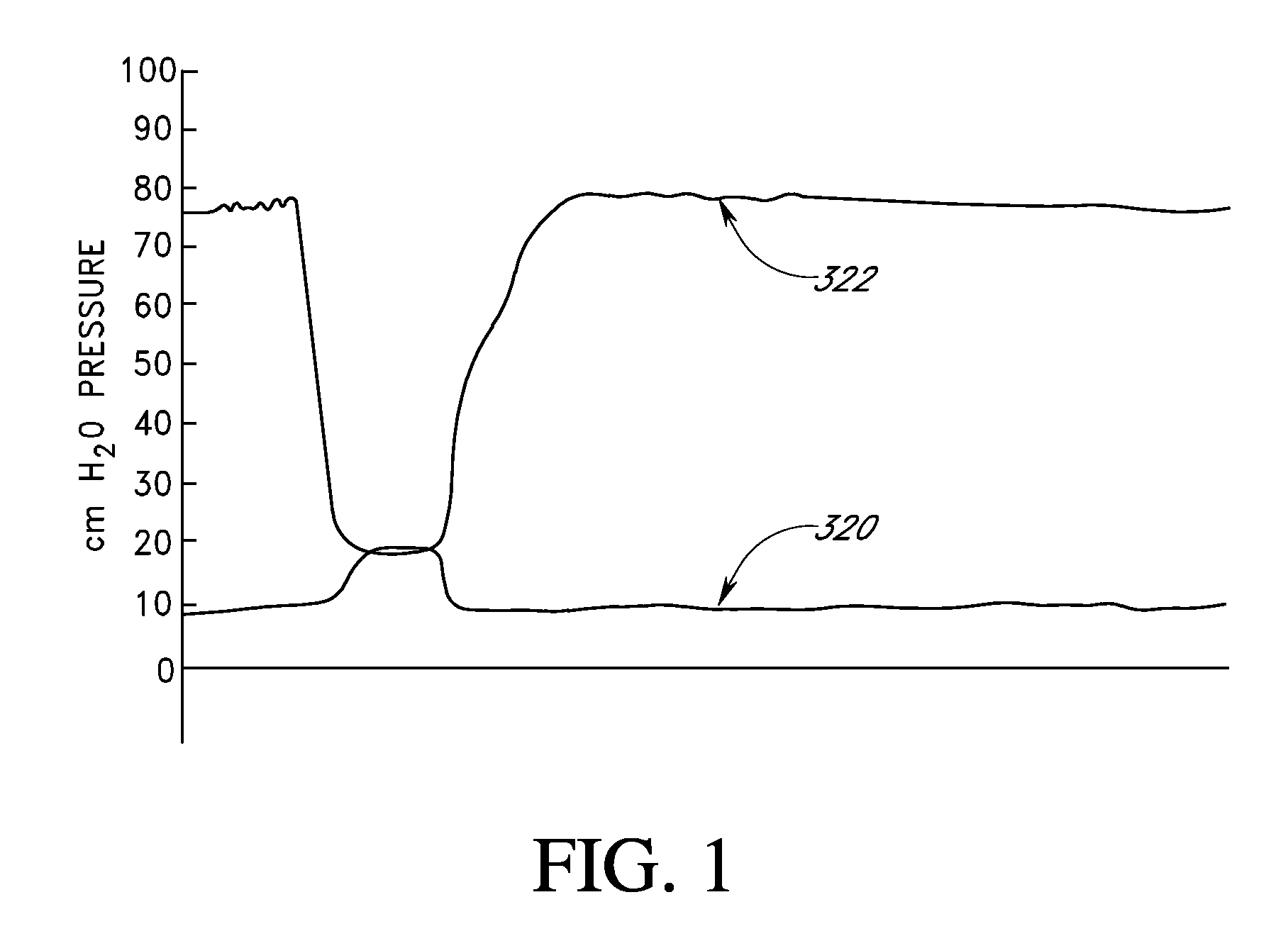Implant with high vapor pressure medium
a high-pressure medium and implant technology, applied in the field of medical devices, to achieve the effect of facilitating the rehabilitation of the neuromuscular system, increasing the outlet resistance, and restoring continen
- Summary
- Abstract
- Description
- Claims
- Application Information
AI Technical Summary
Benefits of technology
Problems solved by technology
Method used
Image
Examples
example 1
[0408]In one illustrative embodiment, intraocular implants or other implantable devices described herein comprise a silicone elastomer, polyolefin or acrylic balloon that may be used to contain air and the selected PFC vapor. The balloons may range in volume from 0.1 milliliters to 2 milliliters.
[0409]The eye is a challenging environment in which to deliver and maintain the inflation of a therapeutic implant because the intraocular pressure exceeds atmospheric pressure and the oxygen tension in the anterior and posterior segments of the eye is known to be significantly less than the oxygen tension in normal atmospheric air. In the absence of a PFC, the balloon will deflate due to the intraocular pressure (IOP) exceeding the oxygen and nitrogen tensions in the anterior and posterior segments of the eye. The oxygen tension in the normal atmosphere is approximately 159 mm of Hg. The oxygen tension in the intraocular environment ranges from 10 to 30 mm of Hg. The nitrogen tension in the...
example 2
[0412]Self-inflation of a balloon in an ophthalmic application can be achieved with a balloon composed of a material which is permeable to oxygen and nitrogen. At the time of implantation, the balloon is charged with the PFC mixture and a minimal amount of air (e.g. 1-25 microliters). The balloon may also be filled with additional air to reduce the time required for complete balloon inflation. Shortly after the time of implantation, the PFC vapor pressure exceeds the IOP in the eye minus the total gas tension in the fluids surrounding the bladder. Self-inflation will occur as a result of diffusion of oxygen and nitrogen, from the vitreous in the case of a posterior segment placement or from the aqueous in the case of an anterior segment placement, through the walls of the balloon as the PFC vapor has diluted these gases, inside the balloon, to partial pressures that are less than their gas tensions in the contacting fluids. The time required for self-inflation will vary from several...
example 3
[0413]To assure that balloon inflation is maintained, the vapor pressure of the PFC mixture may be increased by 1-100 mm Hg relative to the level that matches the IOP / fluid total gas tension differential. In this case the skin tension of the balloon will offset the amount by which the PFC vapor pressure within the balloon exceeds the equilibrium value. The skin tension will pressurize the balloon gases until the oxygen, nitrogen and other gas partial pressures within the balloon rise to match their gas tensions in the contacting fluids. The additional vapor pressure will compensate for normal diurnal fluctuations in IOP.
[0414]For internal balloon gas equilibrium pressures that exceed the IOP, the skin tension of the balloon counterbalances the excess gas equilibrium pressures (defined as equilibrium pressure minus IOP or the PFC vapor pressure plus the total fluid gas tension minus the IOP). The mechanical characteristics of the balloon as well as its polymeric structure are such th...
PUM
 Login to View More
Login to View More Abstract
Description
Claims
Application Information
 Login to View More
Login to View More - R&D
- Intellectual Property
- Life Sciences
- Materials
- Tech Scout
- Unparalleled Data Quality
- Higher Quality Content
- 60% Fewer Hallucinations
Browse by: Latest US Patents, China's latest patents, Technical Efficacy Thesaurus, Application Domain, Technology Topic, Popular Technical Reports.
© 2025 PatSnap. All rights reserved.Legal|Privacy policy|Modern Slavery Act Transparency Statement|Sitemap|About US| Contact US: help@patsnap.com



